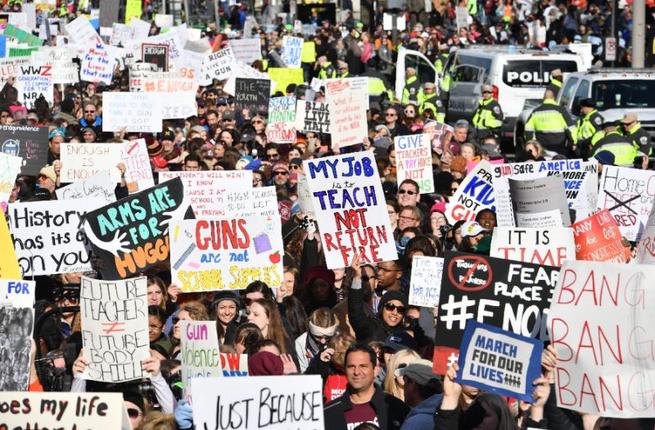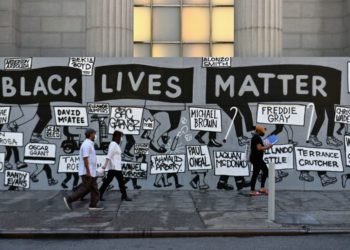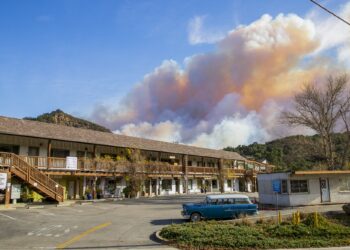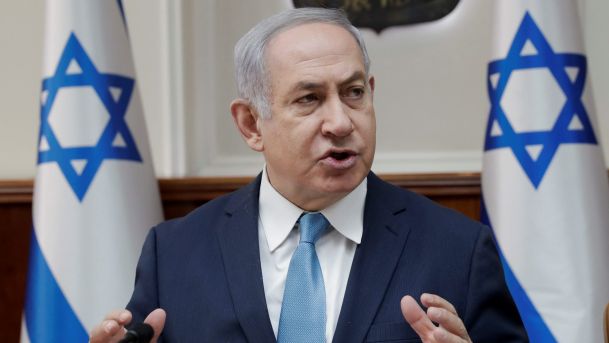In the wake of the 2018 Florida school shooting, where a 19-year-old gunman killed 14 students and 3 teachers, Donald J. Trump’s administration set up the Federal Commission on School Safety. In its final report, released on December 18, it recommends that local communities consider arming “non-specialized” school staff, such as teachers and administrators, to protect students during shootings.
As researchers of armed self-defense and educators, we emphatically disagree with this recommendation. Communities that chose to place armed personnel in their schools should limit firearms to specialists whose core role is to protect students and staff and not to educate or perform other duties. Further, because having armed security introduces additional risks and challenges, we encourage communities to fully explore alternative ways of preventing and minimizing harm during school shootings.
According to the federal commission’s report, 57 percent of American schools utilize “specialized” school resource officers (SROs, armed law enforcement assigned to one or more schools) or school security officers (SSOs, armed or unarmed school employees responsible for maintaining order and preventing crime) to enhance safety.
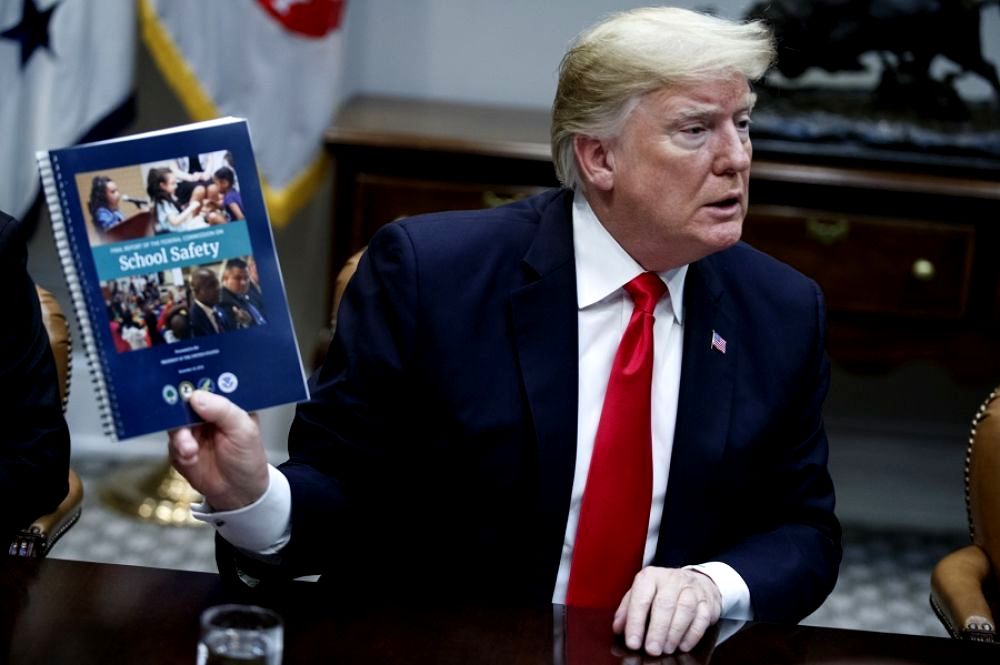
Arming non-specialized staff in response to the objectively small risk of a school shooting raises questions about the impact on the learning environment, students’ responses and psychological well-being, and, as the report notes, whether it’s reasonable to expect educators to “effectively and immediately [respond] to violence.”
Risks of Carrying Firearms
We have researched risks involved in carrying a firearm, and the mental and physical skills required to effectively mitigate those risks and use a gun to protect oneself or others. Our data include thousands of threads of online discussion among Americans who lawfully carry handguns for defense; interviews with police officers, former military, and civilians who carry handguns for personal protection; observations of NRA-sponsored self-defense workshops; participation in concealed handgun license training; and advice from gun dealers.
We draw three conclusions relevant to the commission’s recommendations. First, arming non-specialists poses daily risks to students and staff that outweigh the risk of a school shooting. Second, armed non-specialists are not likely to be effective in a school shooting. Third, to mitigate daily risks and be effective during a shooting, armed specialized officers must complete extensive, on-going, scenario-based training specific to their school environment.
Handgun owners and instructors identify numerous risks of carrying a gun in public, including forgetting, dropping, or accidentally discharging a gun, the gun being stolen, or being taken and used by someone else during an altercation. All of these risks would be introduced to a school environment when staff carry guns.
Mitigating Risks
Mitigating these risks requires constant vigilance and mental focus. Specialized staff may be able to maintain adequate focus. However, it is unreasonable to expect non-specialized staff – even those with military backgrounds – to consistently allocate the mental effort required to effectively minimize these multiple risks while simultaneously fulfilling their primary responsibility of creating a productive and supportive learning environment.
In the event of a school shooting, it is unlikely that an armed non-specialist would be effective in stopping a shooter. Effective armed defense requires constant situational awareness and mental and physical preparedness.
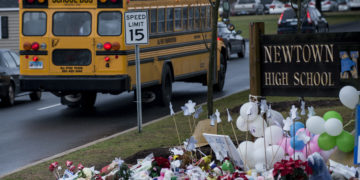
In a school, situational awareness would include paying close attention to which students are where at any given moment, changes in facilities or daily schedules, and any other factors that may influence a shooter’s or victims’ opportunities and actions. Preparedness requires consistent mental rehearsal of scenarios involving potential shooters’ actions, bystander and victim responses, and one’s own responses.
Non-specialized staff cannot be expected to maintain this heightened level of awareness and preparedness while conducting their core professional responsibilities.
Ineffective armed response to a potential or actual shooting could have grave consequences. Risks include freezing in terror and missing the opportunity to prevent further carnage, killing an innocent person mistaken for the shooter, or unintentionally hitting students or staff with defensive fire. Even highly trained police in firefights only hit their targets 18 percent of the time.
Adequate Training
Numerous incidents of ineffective armed officer response during school shootings suggest that many SROs and SSOs lack sufficient training. There are no national standards and few state standards for SRO training. We urge states and communities to require armed officers in schools to exceed the level of training typically required for police. Specifically, they should be required to complete extensive, on-going, scenario-based training specific to school environments.
Armed Educators (and trusted people who work within a school) love our students and will protect them. Very smart people. Must be firearms adept & have annual training. Should get yearly bonus. Shootings will not happen again – a big & very inexpensive deterrent. Up to States.
— Donald J. Trump (@realDonaldTrump) February 24, 2018
Establishing the mental and physical routines needed to respond effectively in a chaotic armed defense situation – the specialty of SWAT teams rather than community police – requires hundreds of hours of training. An incident in March, in which an SRO with SWAT-training effectively halted a school shooting illustrates the benefit of extensive specialized training. As with any skill set, on-going training is needed to maintain routines at an optimum level.
Further, training should include scenario-based simulations. These use a combination of audio, video, and physical props – including guns – to elicit physiological stress similar to real-world encounters. Military and police use these simulations to train officers to make split-second decisions under duress.
Some scenarios should be rehearsed on school grounds with local law enforcement and non-specialized staff so that each person can practice their role in responding to a shooter. A limited number of these simulations should include students, with consideration given to students’ age and psychological well-being.
Is an Armed Presence Necessary?
Placing even highly trained armed officers in schools presents significant challenges. We urge communities to carefully consider whether an armed presence is necessary and to fully explore other means of preventing and responding to school shootings.
Some preventative measures, such as anti-bullying education, are currently performed by SROs and SSOs, and evidence suggests that such efforts can be effective. Research suggests that limiting minors’ access to firearms and investments in nurturing school environments may also help to prevent shootings.
Addressing gun violence in schools in 2019 will require a combination of community actions and policy updates. There is no clear evidence to show, and little reason to believe, that arming teachers would make schools safer. On the contrary, arming teachers would expose students and staff to additional risks -especially students of color who face implicit biases of predominantly white educators. Should a community deem an armed presence necessary, the role must be filled by a dedicated, highly-trained specialist.
Disclaimer: The views and opinions expressed here are those of the author and do not necessarily reflect the editorial position of The Globe Post.

